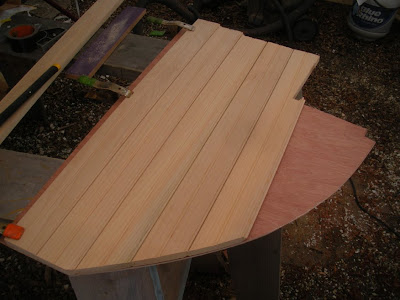I wasn't able to fit one piece of dynel for the cuddy top, so, like the deck, I had to create a 1 inch seam down the center. This was wetted out with epoxy and when dry I was able to get 1 coat of primer on.
The coamings were sanded down with 220 and I was able to get on 2 coats of Allspar varnish.
Aside from finish work, I was able to open the mast step up another 3/8" forward, which hopefully will fix the angle of the mast. But this was all I was able to accomplish this trip before heading back to Nantucket. IMPALA is sailing to Italy the first week in May so be sure to pick up a copy of the Inquirer and Mirror prior to our departure and read about our trip!
































































